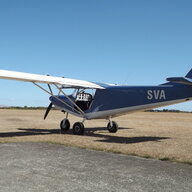Round canopies can open very slowly, or fail to open at all. It was unusual but not that unusual in sport jumping and there was often no identifiable reason.
It used to be assumed that meticulous packing, with every gore laid out absolutely identical to within fractions of an inch, would help prevent this. But slow motion footage of openings shows that, once out of the container, the canopy may move around in all sorts of ways prior to opening. Back when all canopies were round, one jumper at our dropzone routinely did twice as many jumps as anyone else. And to do that...to land, pack and be ready....he would 'trash pack': just a basic standing one sided flaking of the canopy, then pull on the sleeve (as distinct to the standard, which was to tension and split the canopy into L and R and fold each side carefully on the ground, then fold in and pull on sleeve.) He never had a malfunction or bad opening in the 2+ years I was there.




